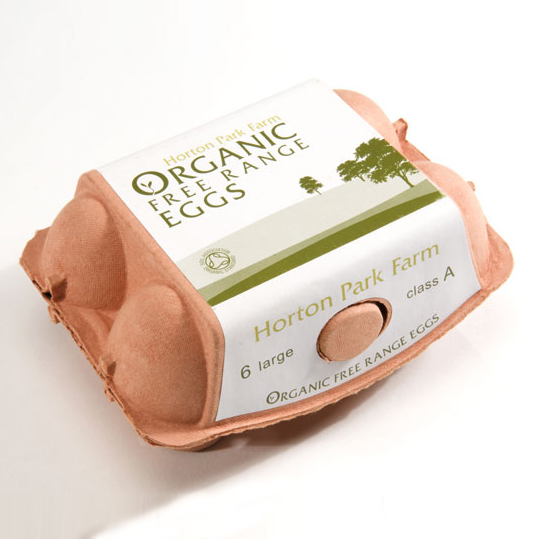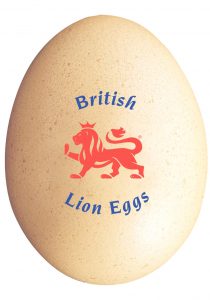
Egg box labelling follows a strict set of rules and regulations to convey and confirm consumer safety. This blog post aims to answer most of the areas you would need to know about so that you can ensure your eggs are labelled lawfully. Danro offers a range of labelling solutions to meet all of your egg box label needs.
Egg box labelling categories
There are several key categories that must be included in the labelling associated with eggs:
- Producer and producer ID
- Egg stamping explanation
- Packing Station No.
- Weight
- Best Before Date
- Class
- Consumer Advice
There is a range of other associations or quality control bodies that provide further assurances for consumers that can be applied to egg box labelling. These are generally welfare and safety assurances to help consumers make a more informed choice about which eggs to purchase.
Egg Box Labelling: Producer and Producer ID
Eggs require a code that allows for proper scrutiny of production by the authorities to ensure public health. This information should include the location (address) for where the eggs are produced. This is imperative for all food consumption for public health enforcement. If there is a problem with infection of some sort, the authorities need to be able to trace production to source so they can address any issues with infection, contamination or production methods and prevent any further outbreak.
The egg box labelling code must include a producer ID number. In the UK, the producer ID number is supplied and kept on register with the Animal and Plant Health Agency. The rules are:
The Registration of Establishments (Laying Hens) Regulations 2003 require all laying hen establishments with 350 or more laying hens to be registered with the Animal and Plant Health Agency (APHA). This includes caged, barn, free range or organic egg-producing hens.
You must also register with APHA as a producer if:
- you have 50 or more hens and any of your eggs are marketed at a local public market
- any of your eggs are marketed to registered packing centres
- If you sell eggs to shops or catering outlets, you must be approved and authorised as a packing centre by APHA so you can grade them as Class A eggs.
Registration is free. Your establishment will be allocated a number which is made up of:
- a digit (0, 1 , 2 or 3) indicating the farming method
- the country of origin ISO code
- a unique identification number for the establishment
- This number must be stamped on all eggs graded as Class A.
Egg Box Labelling: Egg Stamping Explanation
Egg box labelling includes “egg stamping”. This is a set code to describe everything needed for consumer protection. As explained above, it is made up of a production method code, a country of origin code (ISO country code) and a Producer ID, supplied by the Animal & Plant Health Agency.
So a code is [production method][Country of origin][Producer ID]
The production method falls into one of 4 categories:
- 0 Organic
- 1 Free-Range
- 2 Barn
- 3 Cage
The country origin is as per ISO country code – this is applied for all EU egg production, e.g UK for Unitied Kingdom, IE for Irelaned, DE for Germany, FR for France etc. etc.
As mentioned above, the Producer ID is supplied upon registration application by the producer to the Animal & Plant Health Agency. This number will be unique to the production unit.
There must be a statement on your egg box labelling to explain this to consumers. This is included in our Egg Box Labels available from our shop.
The statement will normally read:
Egg Stamping Explanation: 0 = Organic, 1 = Free Range, 2 = Barn, 3 = Caged, UK = Origin, 9999 = Producer ID.
Egg Box Labelling: Packing Station No.
Where eggs are packed for sale to the public (subject to the criteria found on the APHA website), they will need to have a packing station number. This will be supplied by APHA and must be displayed prominently on the packaging.
If you are packing eggs supplied from another egg producer, you will need to stamp the eggs with their details and label your product with the packing station number. This is for infection control purposes for public health.
Egg Box Labelling: Weight
Eggs can be sold in mixed weight and this must be made clear on the packaging. Where eggs are graded by size, the weight is classified as follows:
Very Large: 73g +over
Large: 63 – 73g
Medium: 53 – 63g
Small: 53g + under
Egg Box Labelling: Best Before Date
Eggs should be labelled with a best before date. The date applied depends on how the eggs are stored. Eggs refrigerated once sold to the consumer are best used within 3 weeks. Unrefrigerated eggs will lose their quality sooner.
Once refrigerated, eggs should be kept refrigerated until used. It is not advisable to refrigerate eggs then unrefrigerated them as their shelf life and quality will reduce dramatically. The consumer advice (see below) recommends eggs are refrigerated after purchase.
Egg Box Labelling: Class
We specialise in producing labels for eggs destined for human consumption. Eggs fall into 3 classes:
- Class A: They are naturally clean, fresh eggs, internally perfect with shells intact and the air sac not exceeding 6mm in depth. The yolk must not move away from the centre of the egg on rotation. Grade A eggs are sold as shell eggs.
- Class B: These are shelled eggs. They are pasteurised and this type of egg is normally used in commercial food production.
- Industrial: These are used for non-food application such as pharmaceutical or cosmetics such as soaps and shampoos.
Egg Box Labelling: Consumer Advice
Egg box labelling should include consumer advice on how to store eggs, as well as the explanation of the egg type. By that, we mean whether they are organic, free range, barn or caged. Organic eggs must also be free range and are the highest standard of eggs in terms of animal welfare.
The statement should read:
Consumer Advice: Keep refrigerated after purchase.
Egg Box Labelling: Consumer Assurance and Welfare Declarations
 There are a number of welfare and consumer associations that may be suitable to enhance the image and quality of your product. Egg production has had a bad rap for treating birds poorly in the past. There are a number of bodies that will give assurance regarding the quality of husbandry your birds may be received.
There are a number of welfare and consumer associations that may be suitable to enhance the image and quality of your product. Egg production has had a bad rap for treating birds poorly in the past. There are a number of bodies that will give assurance regarding the quality of husbandry your birds may be received.
The Lion Logo is applicable to some 90% of UK egg production. This scheme is designed to ensure a code of practice amongst egg producers to limit the risk of salmonella in flocks and reduce the risk of salmonella contamination in eggs. More information can be found here.
Other major assurance programs include the Soil Association, RSPCA and Freedom Foods.
Do you need egg box labels? You can order what you need directly here or call Natalie now on 01332 865933 to start your order – or complete our online form and we will call you back.
